Among the peaceful portraits and soothing art pieces, there are creepy old paintings that give audiences a more unsettling and disturbing view of the world. These famous horror paintings go from mildly weird to absolutely shocking and deranged. Can you handle these 25 disturbing art pieces? Many have tried and many have failed. Here are 25 Disturbing Art Pieces That Challenge People’s Sanity.
Caution: Contains disturbing images.
Guernica
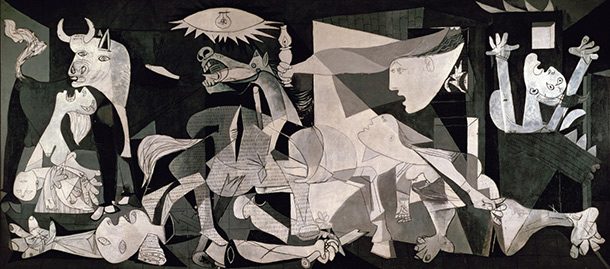
One of Pablo Picasso’s most famous pieces, Guernica shows the tragedies of war and the suffering it inflicts upon individuals, particularly innocent civilians. This work has gained a monumental status and has become a perpetual reminder of the atrociousness of war.
Anatomical Pieces
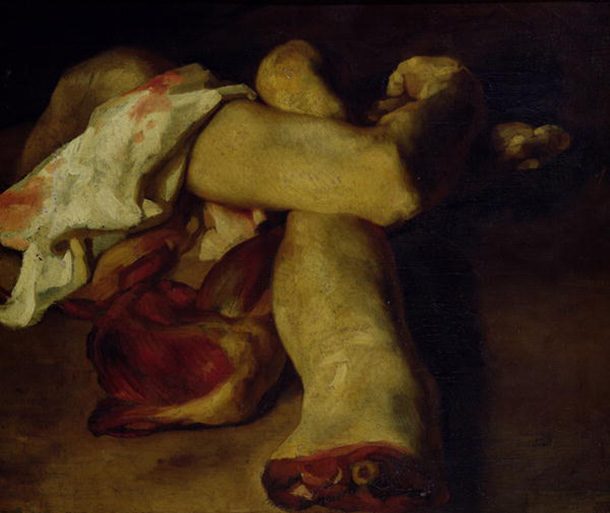
“Anatomical Pieces” is a shocking masterpiece by French painter Theodore Gericault who used human remains as subjects for his work.
Diomedes Being Eaten by His Horses
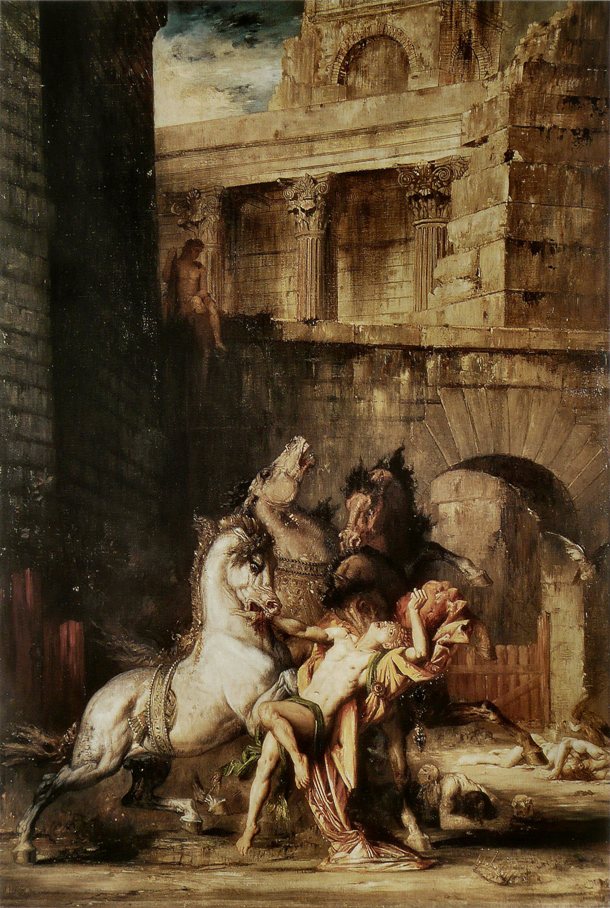
“Diomedes Being Eaten by His Horses” is a watercolor painting by French symbolist painter Gustave Moreau that depicts the dramatic climax from the 8th labor of Hercules, who was ordered to capture the four flesh-eating horses belonging to King Diomedes. Hercules killed the king in battle and fed his body to the horses.
Deterioration of Mind Over Matter
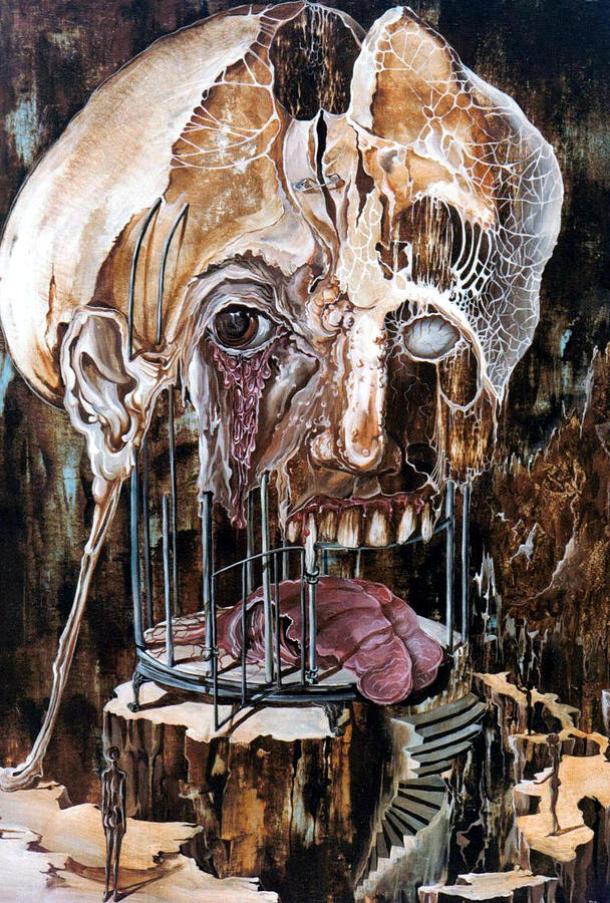 https://www.visionaryartexhibition.com/visionary-community-blog/25-disturbing-art-pieces-that-challenges-peoples-sanity
https://www.visionaryartexhibition.com/visionary-community-blog/25-disturbing-art-pieces-that-challenges-peoples-sanity This 1973 painting by Austrian author Otto Rapp is a frightening depiction of a decomposing human skull over a birdcage “in which the raw gore of man’s physical being lies lifeless at the base.”
Dante and Virgil in Hell
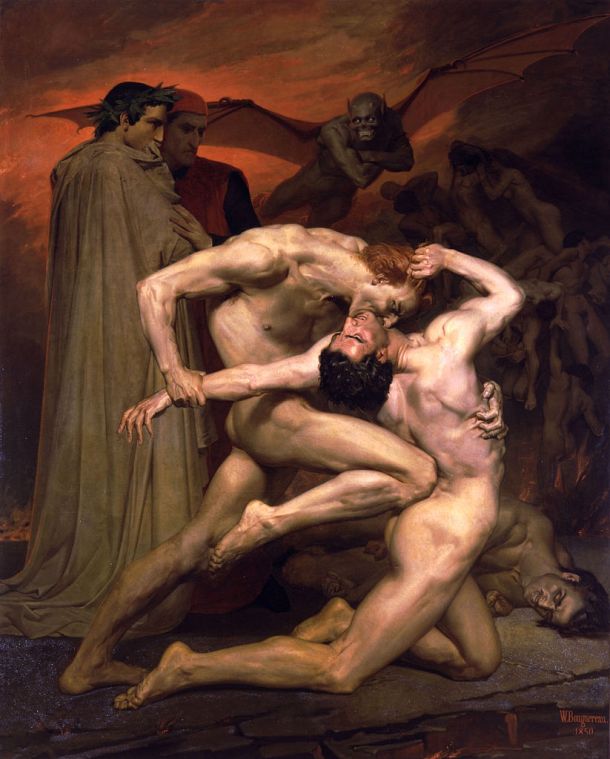
Dante and Virgil in Hell by W. A. Bouguereau was inspired by a short scene from Dante’s Inferno where Dante, accompanied by Virgil, watches a fight between two damned souls.
Untitled Painting
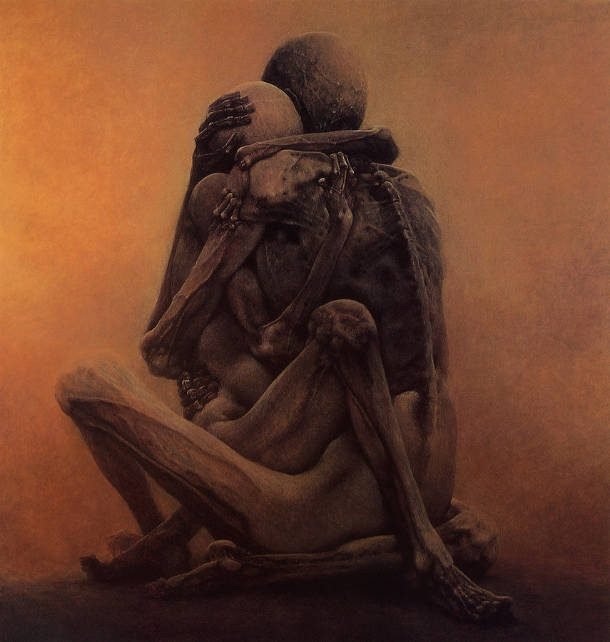
This dreary oil painting by Polish author Zdislaw Beksinski does not have a name. We only know it was painted in 1984, in the period when Beksinski’s main subject was utopian realism, surreal architecture, and doomsday scenarios.
A Negro Hung Alive
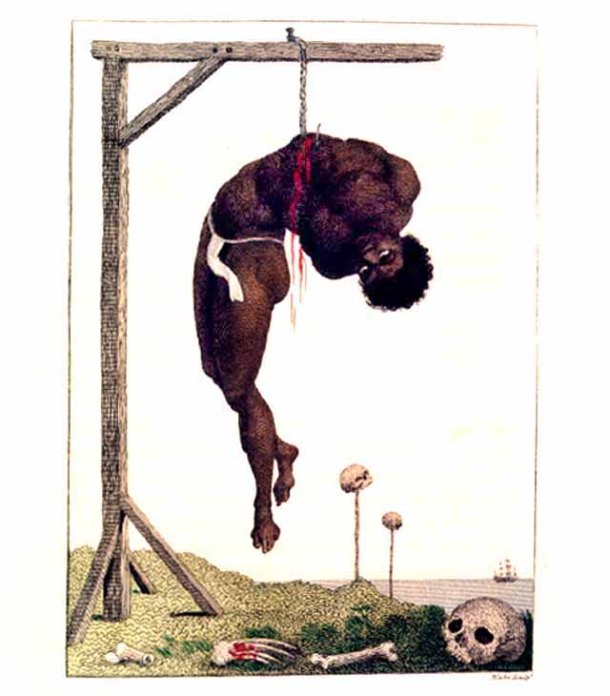
This gruesome image by William Blake shows a slave suspended to a gallows by means of a hook through his ribs. The work is based on an eye witness account from Dutch soldier J.G. Stedman who witnessed the cruelty in person.
Big Electric Chair
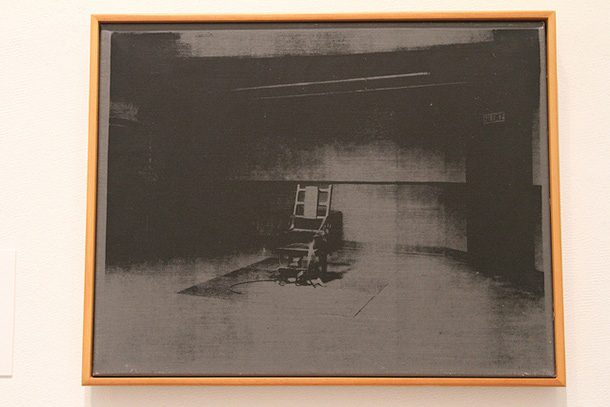
Painted in 1967 by famous American pop art painter Andy Warhol, this painting was part of series depicting electric chairs. Warhol made the series in a period when he focused on bleak themes such as death, disasters, suicides or car crashes.
Hell
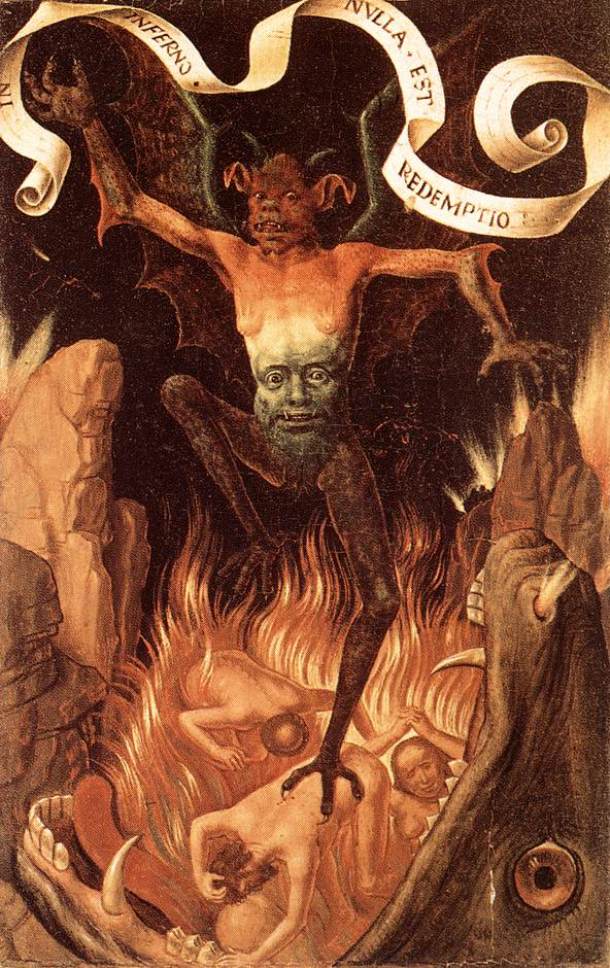
This 1485 painting by German author Hans Memling was one of the scariest pieces of artwork during its time and was used to force people to live virtuous lives. Memling even amplified the terrifying effect of the outrageous scene by adding the banner saying: “In hell there is no redemption.”
The Water Ghost
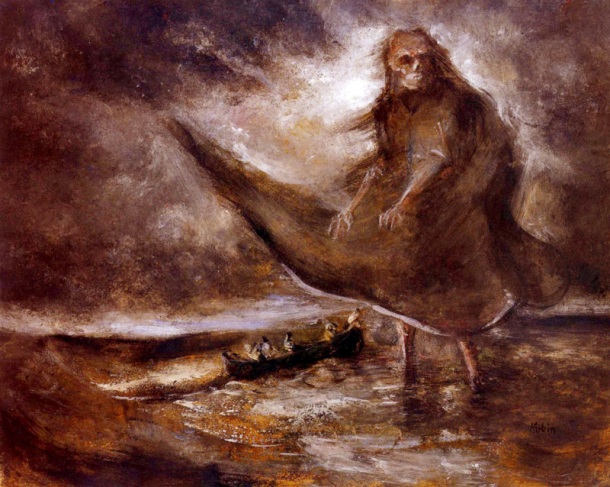
Artist Alfred Kubin is considered an important representative of symbolism and expressionism and is noted for dark, spectral, symbolic fantasies. The Water Ghost is one of such work, depicting torment and impending doom at sea.
Study after Velazquez's Portrait of Pope Innocent X
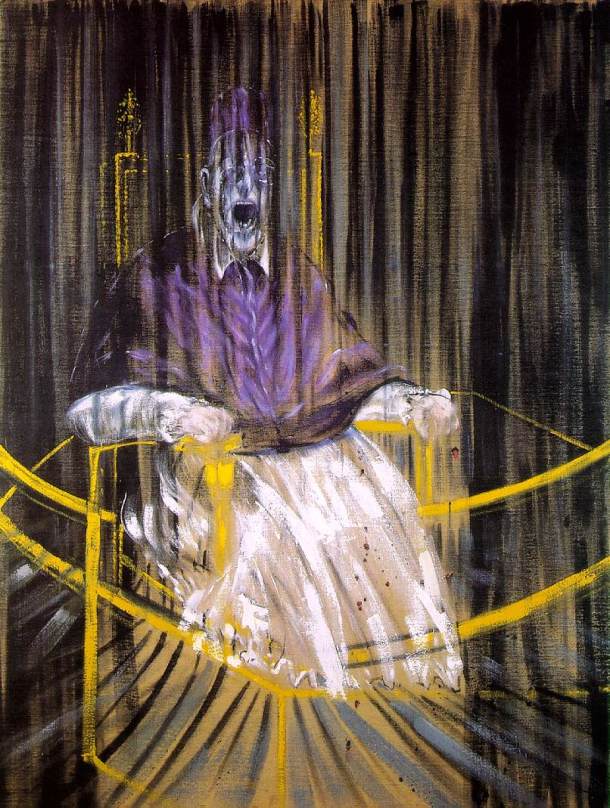 www.artchive.com
www.artchive.com One of the most famous paintings by Francis Bacon was completed in 1953. The work is one of a series of over 45 variants of the Velázquez painting which Bacon executed throughout the 1950’s and early 1960’s. In Bacon’s version, the pope is depicted screaming with sinister drapes on a dark, blurry background.
Necronom IV
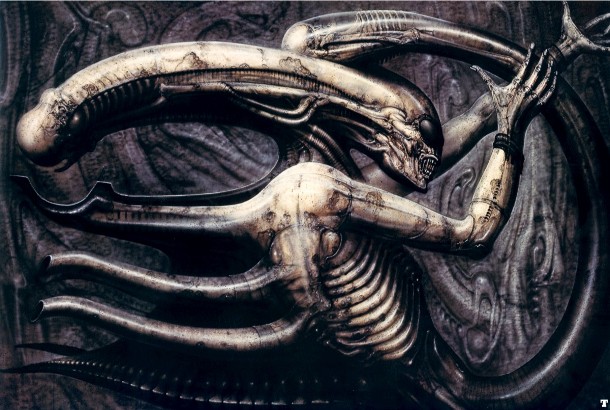
This frightening creation from renowned artist Hans Rudolf Giger was the inspiration for the creatures in the Alien movie. Giger suffered from night terrors, and his paintings are all to some extent inspired by his experiences with the sleep disorder.
The Temptation of Saint Anthony
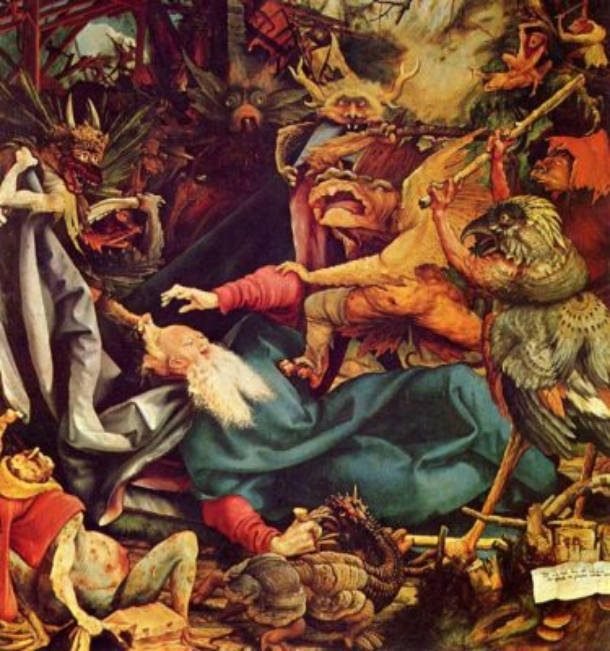
The Temptation of Saint Anthony was an inspiration for numerous painters, including Hieronymus Bosch, Paul Cézane and even Salvador Dalí. But Matthias Grunewald’s oil on wood version of the theme is one of the most impressive and intense.
The Flaying of Marsyas
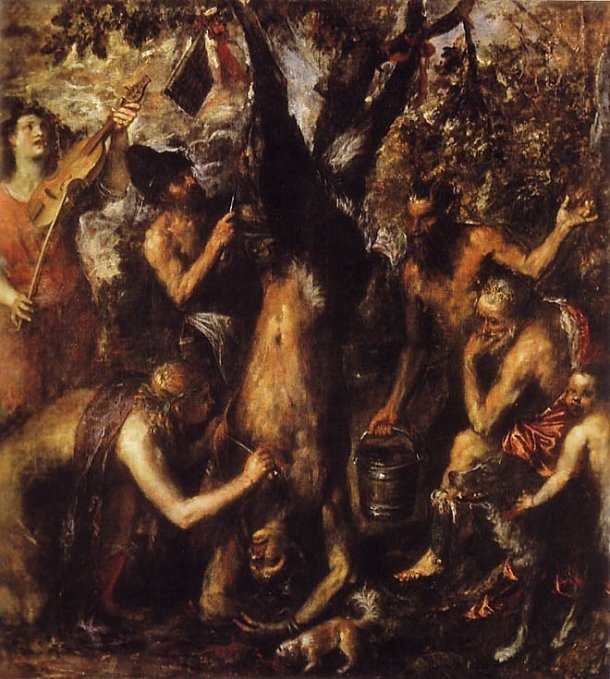 slavkasverakova.wordpress.com
slavkasverakova.wordpress.com Painted by the Italian Renaissance artist Titian, The Flaying of Marsyas is currently housed in the National Museum in Kromeriz, Czech Republic. The art work depicts the crude scene from Greek mythology where satyr Marsyas is being flayed for daring to defy the god Apollo.
The Scream
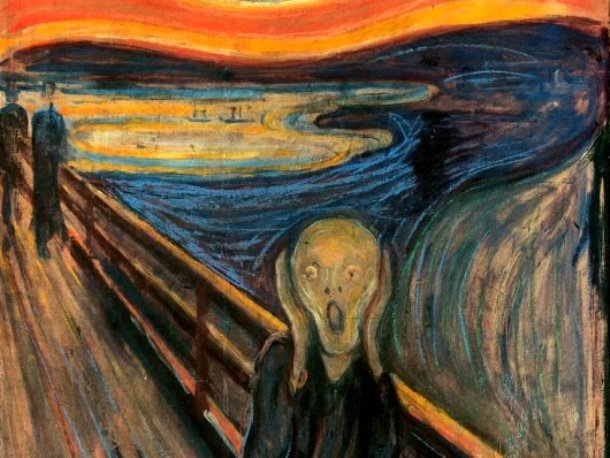
The Scream is a series of expressionist paintings and prints by Norwegian artist Edward Munch that show an agonized figure against a blood colored sky. Though bizarre in appearance, the Scream was originally inspired by an evening walk in which Munch witnessed a “blood red” setting sun while perceiving a sense in which nature was screaming.
Gallowgate Lard
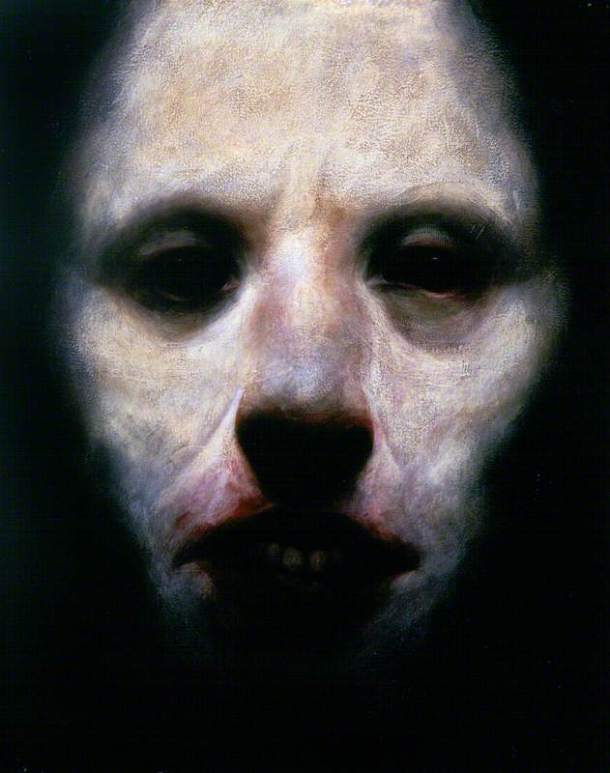
This thick oil painting by Scottish author Ken Currie is supposed to be his self portrait. Currie specialized in grim, socio-realistic subjects and depicted the bleak urban life of the Scottish working class.
Saturn Devouring His Son
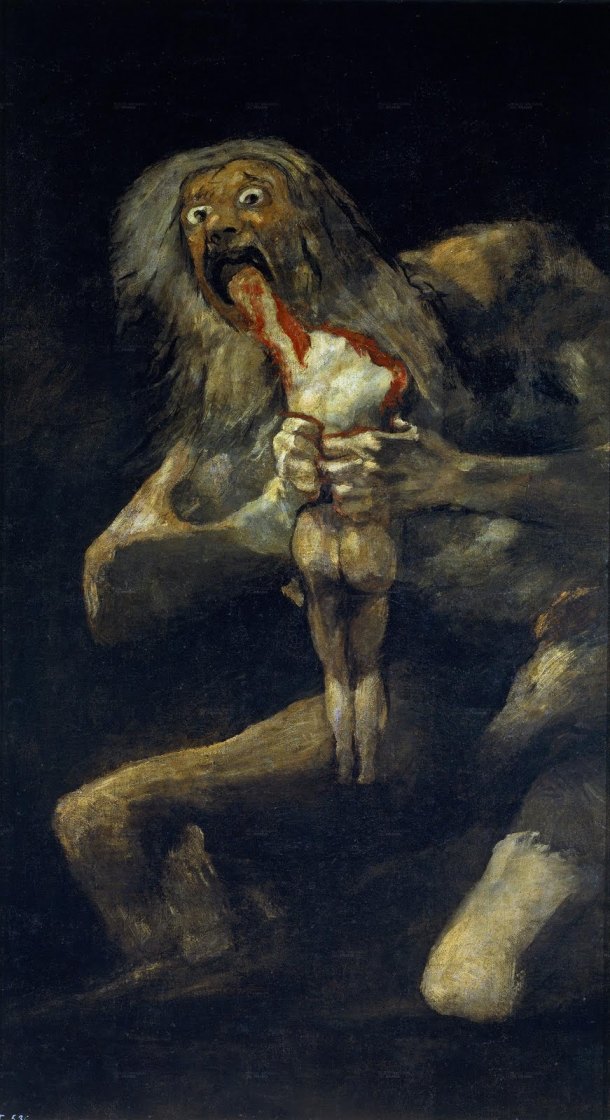
One of the most famous and disturbing works by Spanish artist Francisco Goya was actually painted on his house wall between 1820 and 1823. Saturn Devouring His Son was based on the Greek myth of the Titan Chronus (Romanized to Saturn) who feared that he would be overthrown by one of his children. His solution was to eat each one upon their birth.
Death and the Miser
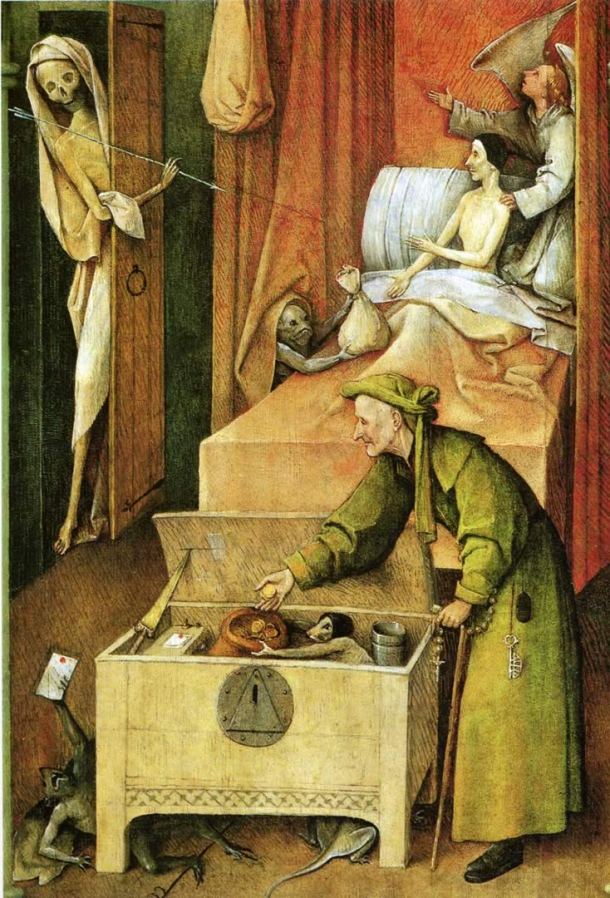
Currently housed in the National Gallery of Art in Washington, D.C, Death and Miser by Hieronymus Bosch is a chilling example of a “memento mori” (Latin for ‘remember that you will die’). This type of art reminded the viewer of the certainty of death and the vanity of earthly life.
The Flaying of the Corrupt Judge Sisamnes
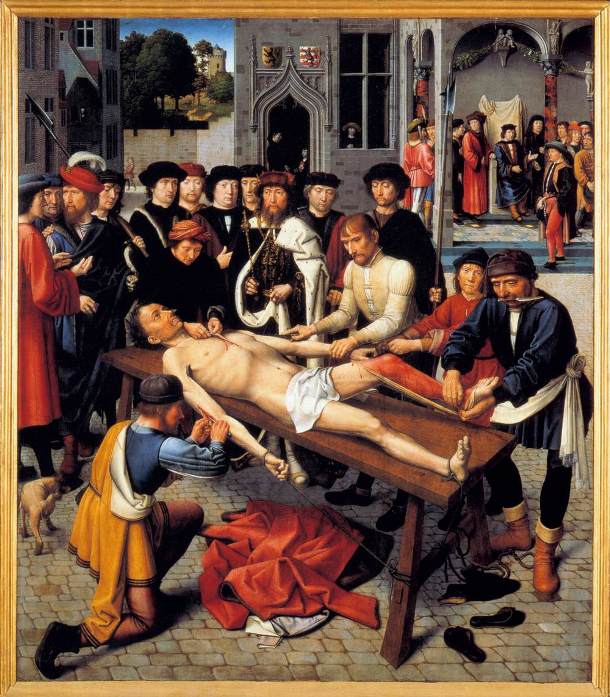
The Flaying of the Corrupt Judge Sisamnes by Gerard David is now deposited in the Groeninge Museum, Bruges, Belgium and was based on a Herodotus story about a judge who accepted a bribe and delivered an unjust verdict. As punishment, the king had him flayed alive.
Judith Beheading Holofernes
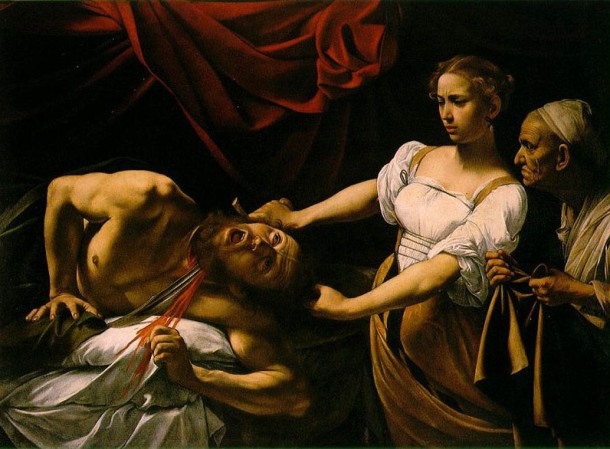
The beheading of Holofernes was depicted by artists such as Donatello, Sandro Botticelli, Giorgione, Gentileschi, Lucas Cranach the Elder and many others. However, Caravaggio’s 1599 painting highlights the moment of greatest dramatic impact, the moment of the decapitation itself.
The Nightmare
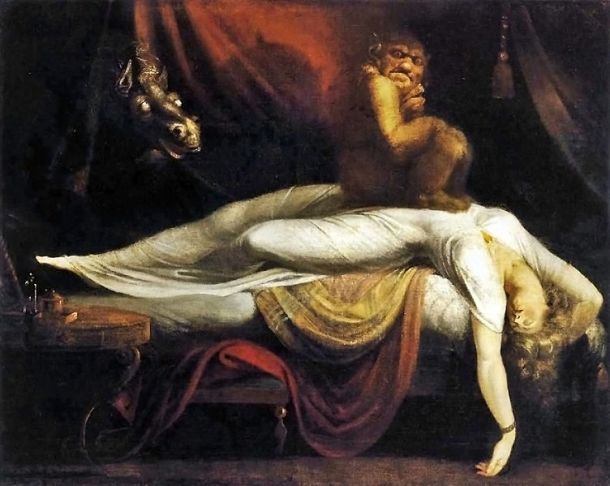
An oil painting by Swiss painter Henry Fuseli, The Nightmare was first displayed at the annual Royal Academy Exhibition in London in 1782, where it shocked visitors as well as the critics.
Heads Severed

French painter Theodore Gericault (who was known for his naturalistic renderings of distressed anatomy) finished this painting in 1818.
Massacre of the Innocents
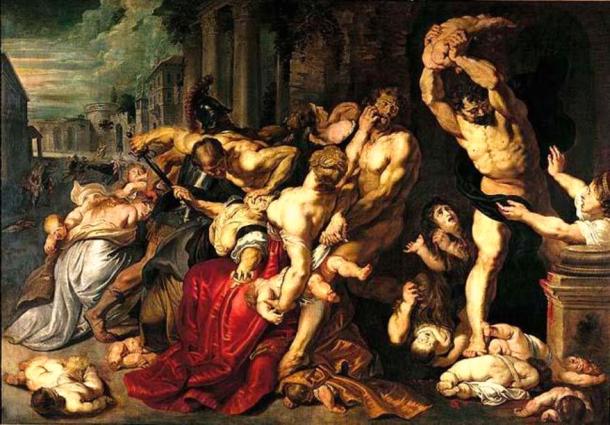
This intense piece of art by Peter Paul Rubens consisting of two paintings and completed in 1612 is thought to have been influenced by famous Italian painter Caravaggio.
Figure with Meat
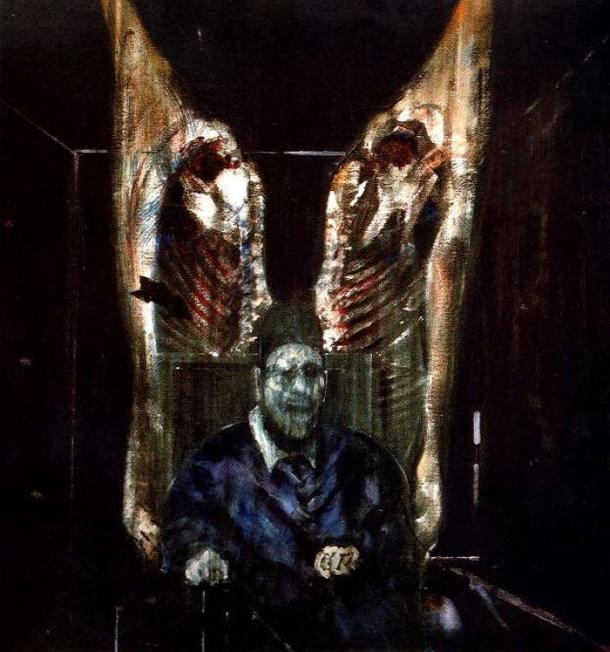
Francis Bacon finished this painting in 1954. He based the painting on Velazquez’s portrait of Pope Innocent X but made the Pope look like a gruesome figure. He even amplified the terrifying effect by adding two bisected halves of a cow.
The Disasters of War
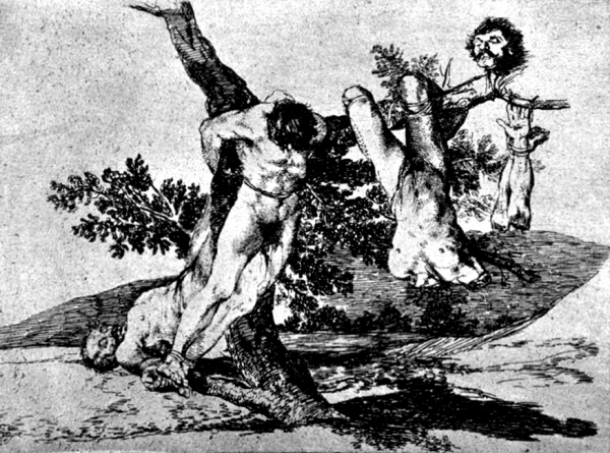
The Disasters of War is a series of 82 prints created by Spanish painter Francisco Goya between 1810 and 1820. Goya was deeply affected by the conflicts between Spain and Napoleon’s French Empire and decided to express the war atrocities through these prints.



























